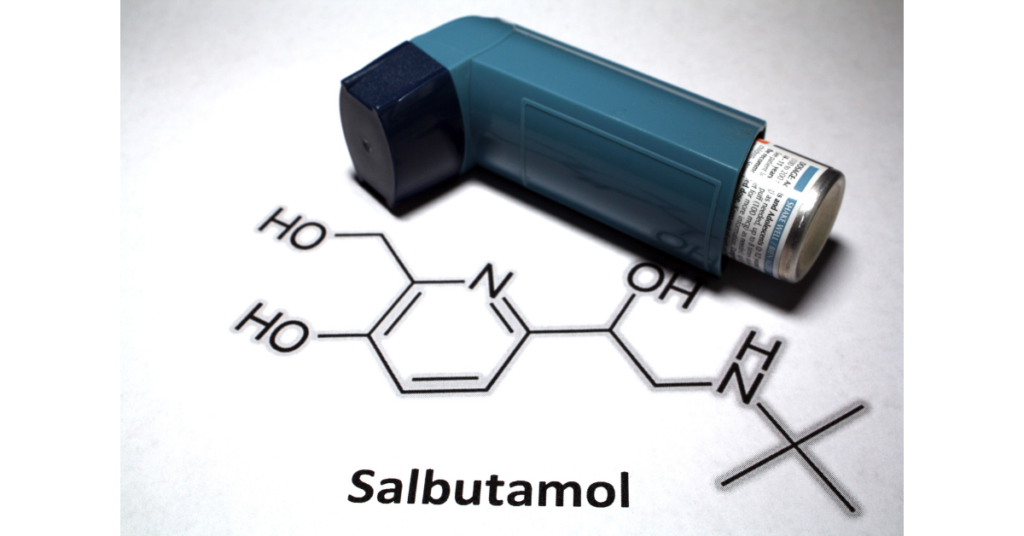Asthma drug Salbutamol’s potential as Alzheimer’s treatment
A new study reveals that the common asthma medication salbutamol may offer potential as a treatment for Alzheimer’s disease.
Alzheimer’s disease is the most common form of dementia, affecting 47 million people worldwide, and its prevalence is expected to triple to more than 130 million cases by 2050.
No effective treatments that cure the disease or slow down its progression have been discovered. However, this new early-stage study has revealed that repurposing an existing drug, salbutamol, offers significant potential as a low cost and rapid response option.
Extensive analytical in-vitro experiments conducted by the research team show that salbutamol is effective at reducing the accumulation of insoluble fibres of the tau protein, which is found in the brains of people with Alzheimer’s disease. These microscopic fibres accumulate into neurofibrillary tangles and can cause neuron destabilisation, brain cell death, and are a key characteristic of the disease’s progression.
Shift in research
Much Alzheimer’s disease research has focused on the build-up of amyloid plaques, caused by misfolding of the amyloid-β protein. However, because of disappointing results from numerous therapies targeting Aβ aggregation, more attention is shifting towards tau.
This study, led by researchers at Lancaster University, used a new automated ‘high throughput’ screening approach to study the structure of the misfolding tau protein with a special analytical technique called ‘Synchrotron Radiation Circular Dichroism’ (SRCD) at Diamond Light Source, the UK national synchrotron light source in Oxfordshire. With this powerful technique they were able to look at a selection of more than 80 existing compounds and drugs simultaneously to determine their effectiveness at preventing the formation of tau fibrils.
This method confirmed the compound epinephrine, more commonly known as adrenaline, was effective at stabilising the tau proteins and preventing the formation of tau tangles. However, our bodies do not easily absorb epinephrine, and it rapidly gets metabolised, so the scientists then looked at a range of readily available compounds with similar chemical structures. This search revealed four current drugs as possible candidates: Etamivan, fenoterol, dobutamine, and salbutamol.
Etaminvan and fenoterol were found to have little effect on the assembly of tau tangles. Dobutamine, which is used for the rapid treatment of heart attacks and heart failure, was found to have some benefit. However, because its effects are very short-lived, and because it needs to be administered intravenously, it is not ideal as a basis for treatment of Alzheimer’s disease.
Further tests
Further tests using a range of analytical techniques all revealed salbutamol could inhibit tau aggregation in vitro. Tests where salbutamol was added to solutions containing tau resulted in drastically reduced density of fibrous tau structures responsible for the tau neurofibrillary tangles.
The researchers believe that salbutamol interacts with an early stage of tau fibril formation, reducing their ability to form an initial nucleus which drives the aggregation process.
Because it is easily ingested, absorbed into the brain, and remains in the body for several hours, salbutamol has attractive properties as a research avenue for potential new treatment for Alzheimer’s.
Dr David Townsend, of Lancaster university and lead author of the research, said, “Our work highlights the potential impact of repurposing drugs for secondary medical uses, by discovering a novel therapeutic strategy that impedes the molecular pathology of Alzheimer’s disease, and which may have otherwise gone unstudied. Salbutamol has already undergone extensive human safety reviews, and if follow up research reveals an ability to impede Alzheimer’s disease progression in cellular and animal models, this drug could offer a step forward, whilst drastically reducing the cost and time associated with typical drug development.”
Professor David Middleton, co-author of the research, said, “This work is in the very early stages, and we are some way from knowing whether or not salbutamol will be effective at treating Alzheimer’s disease in human patients. However, our results justify further testing of salbutamol, and similar drugs, in animal models of the disease and eventually, if successful, in clinical trials.”
Dr Rohanah Hussain, of Diamond Light Source, Senior Beamline Scientist and co-author said, “Diamond B23 beamline unique micro-collimated beam has made high throughput CD possible allowing the screening of many compounds through structural activity correlation crucial in drug discovery.”
The researchers say that current asthma inhalers result in only a small amount of salbutamol reaching the brain and so, if further research is successful, a new delivery method would also need to be developed. They add that future research could also focus on other asthma drugs that are chemically similar to salbutamol, but which circulate in the bloodstream for much longer.
References
Townsend DJ, Mala B, Hughes E, Hussain R, Siligardi G, Fullwood NJ, Middleton DA. Circular Dichroism Spectroscopy Identifies the β-Adrenoceptor Agonist Salbutamol As a Direct Inhibitor of Tau Filament Formation in Vitro. ACS Chemical Neuroscience 2020 11 (14), 2104-16. DOI: 10.1021/acschemneuro.0c00154

